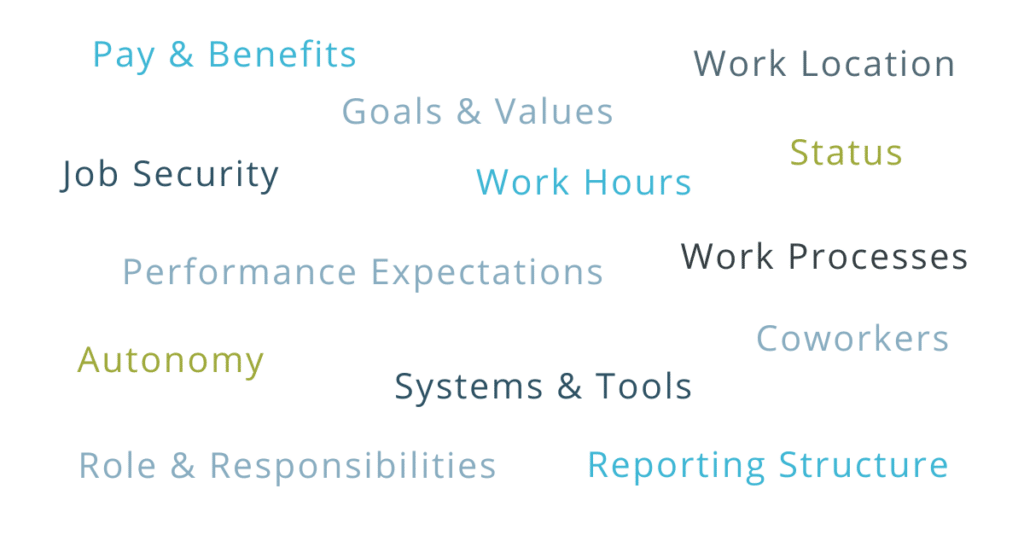Why Your Project Needs Organizational Change Management
Because you found this article, you may be thinking about doing a project that involves Microsoft Dynamics 365. Perhaps you’re upgrading your enterprise resource planning (ERP) system with Dynamics 365 Finance and Operations or are giving your account managers new tools with the platform’s Sales solution.
Projects like these need Organizational Change Management because they are critical business systems and may involve a lot of people. If team members don’t embrace the new software, your projects won’t generate the expected returns.
If you agree but need to convince others, let me help you make the case.
Interpreting the Change
Change triggers our brains to ask one important question:
- Should I be worried?
If you’re familiar with Charles Darwin’s theory of evolution, you will know that members of a species that responded to this question with sound judgment were more likely to pass along their genes.
Here’s an example. Suppose thousands of years ago a group of people lived at the foot of a mountain. One day the earth shook, and smoke was seen coming through cracks on the mountain’s slopes.
Nobody had ever seen anything like this before. It was an unexpected and unfamiliar change. Should they be worried? They certainly all noticed it. Those who guessed that the shaking earth and smoke foretold danger, may have decided to move. Those who thought “No big deal” would have stayed and continued with their lives.
If the volcano didn’t erupt, everyone would have been fine. But if it did, many of the people who stayed may have died. In this case, those who took the question seriously and acted on the side of caution were more likely to watch their grandchildren grow up and tell them stories about smoking mountains.
What are the Change Impacts that Worry Us?
In modern times our brains stay on high alert for all types of threats, not just those that might kill us. It’s a 3-step process:
People will stay more calm and productive during your project if you take actions that make the change less threatening.
It’s less threatening when the change:
- Doesn’t personally affect them
- Is something they can easily overlook
- Was their idea in the first place
For most large software projects none of these are true. People will be affected in significant ways, and few, if any, were part of the decision to do the project. They will be worried. Your job is to figure out why and what you can do to ease their concerns.
It helps to have a list of potential concerns. Try to remember an upsetting change you had to make at work. Which of the following did the change affect in your organization?
Can you think of others? Remember that the more people your change touches and the more changes one person experiences, the more likely their alarm bells will sound, and they will resist the change.
How Software Projects Affect People’s Lives
You now have what you need to explain to your project’s sponsor or other key stakeholders why change management should be part of this project. Here are your talking points:
- Employees are going to perceive this change as a threat and react accordingly.
- This will make the project far more difficult to complete.
- We may lose some top performers in the process and suffer productivity setbacks due to people feeling worried about this change.
When those stakeholders counter with, “I think they’ll be fine,” it’s time to add some details. Imagine sharing this assessment of the situation:
- 78% of our employees will need to use the ERP.
- The Microsoft Dynamics 365 platform looks much different than our current system.
- We will ask employees to give up the spreadsheets and homegrown tools they built and like.
- We expect automation to create productivity gains. Some employees will assume that will lead to future layoffs.
- Some of our future users don’t currently use the computer. They fill out forms and let office staff take care of the computer work. When that changes, those with low computer literacy will feel threatened by this.
What specific arguments would you make for your project? It’s too easy to underestimate the impact and focus only on a project’s technical requirements. This is a mistake.
Maybe the volcano doesn’t erupt, and all will be fine, but you need to be ready in case it does. Your employees will be worried and act out of their fear. You need to prove to them that there is no cause for concern.
Stoneridge Makes Change Management a Part of the Process
If you have people on your team who understand and have time to do change management work, ask them to help with your project. If you don’t, Stoneridge can lend a hand. We offer three change management support options:
- On-demand: We support a specific need and then let your team do the rest of the change management work.
- Planning and advisory: We offer guidance and problem-solving support.
- Leadership and implementation: We drive change management for the project and take a large part of the implementation work.
When success depends on people thinking and behaving differently, you need to guide them on their change journey. We can help you predict, prevent, and mitigate people-side risk.
Want to Learn More About How Change Management Can Help You?
Please reach out to us or visit our website to learn more about our Organizational Change Management services! We are ready to assist you as you navigate through important changes in your business.
Under the terms of this license, you are authorized to share and redistribute the content across various mediums, subject to adherence to the specified conditions: you must provide proper attribution to Stoneridge as the original creator in a manner that does not imply their endorsement of your use, the material is to be utilized solely for non-commercial purposes, and alterations, modifications, or derivative works based on the original material are strictly prohibited.
Responsibility rests with the licensee to ensure that their use of the material does not violate any other rights.









